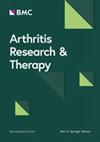Mortality in polymyalgia rheumatica: a 38-year prospective population-based cohort study from Southern Norway
IF 4.6
2区 医学
Q1 Medicine
引用次数: 0
Abstract
Robust long-term mortality data on patients with polymyalgia rheumatica (PMR) are lacking. The aim of this study was to determine all-cause mortality in isolated PMR using a large, population-based, inception cohort followed prospectively over a 38-year period. Between 1987 and 1997, 337 incident cases of PMR and biopsy-proven GCA were included in a prospective, population-based inception cohort in Aust-Agder County, Norway. Diagnosis was ascertained clinically by a rheumatologist, with PMR cases meeting Bird`s criteria. Patients were followed until death or end of study on December 31st, 2024. Each case was matched by gender, age at inclusion, and residency with 15 population comparators drawn from the population registry in Norway. We assessed mortality and survival by standard mortality ratios (SMR) and the Kaplan-Meier method. A total of 274 patients with isolated PMR (66.1% female, mean age at diagnosis 71.9 years) and 63 patients with GCA (76.2% female, mean age at diagnosis 71.6 years) were included. By the end of the study, 96.4% of all patients were deceased. Mean follow-up time for all patients was 13.7 years, with a maximum of 35.3 years. For cases with isolated PMR, the overall SMR was 0.97 (95% confidence interval [CI] 0.85, 1.09), for men 0.77 (95% CI 0.62, 0.95), and for women 1.11 (95% CI 0.95, 1.28). For GCA, the overall SMR was 1.10 (95% CI 0.85, 1.40), with no gender difference. In this comprehensive long-term follow-up study with nearly complete data on mortality, isolated PMR was not associated with increased mortality, reinforcing the view that it does not confer a higher mortality risk.多肌痛风湿病的死亡率:挪威南部一项为期38年的前瞻性人群队列研究
风湿病多肌痛(PMR)患者的长期死亡率数据缺乏。本研究的目的是通过一个大型的、基于人群的、前瞻性随访38年的初始队列来确定孤立性PMR的全因死亡率。1987年至1997年间,337例PMR和活检证实的GCA病例被纳入挪威奥斯特阿格德县的前瞻性、基于人群的初始队列。临床诊断是由风湿病学家确定的,PMR病例符合伯德标准。患者被跟踪到2024年12月31日死亡或研究结束。每个病例按性别、入组时的年龄和居住地与挪威人口登记处抽取的15个人口比较者进行匹配。我们通过标准死亡率(SMR)和Kaplan-Meier法评估死亡率和生存率。共纳入274例分离性PMR患者(66.1%为女性,平均诊断年龄71.9岁)和63例GCA患者(76.2%为女性,平均诊断年龄71.6岁)。到研究结束时,96.4%的患者死亡。所有患者的平均随访时间为13.7年,最长为35.3年。对于孤立性PMR病例,总体SMR为0.97(95%可信区间[CI] 0.85, 1.09),男性为0.77 (95% CI 0.62, 0.95),女性为1.11 (95% CI 0.95, 1.28)。对于GCA,总体SMR为1.10 (95% CI 0.85, 1.40),无性别差异。在这项具有几乎完整死亡率数据的全面长期随访研究中,孤立的PMR与死亡率增加无关,这加强了它不会带来更高死亡率风险的观点。
本文章由计算机程序翻译,如有差异,请以英文原文为准。
求助全文
约1分钟内获得全文
求助全文
来源期刊

Arthritis Research & Therapy
RHEUMATOLOGY-
CiteScore
8.60
自引率
2.00%
发文量
261
审稿时长
14 weeks
期刊介绍:
Established in 1999, Arthritis Research and Therapy is an international, open access, peer-reviewed journal, publishing original articles in the area of musculoskeletal research and therapy as well as, reviews, commentaries and reports. A major focus of the journal is on the immunologic processes leading to inflammation, damage and repair as they relate to autoimmune rheumatic and musculoskeletal conditions, and which inform the translation of this knowledge into advances in clinical care. Original basic, translational and clinical research is considered for publication along with results of early and late phase therapeutic trials, especially as they pertain to the underpinning science that informs clinical observations in interventional studies.
 求助内容:
求助内容: 应助结果提醒方式:
应助结果提醒方式:


